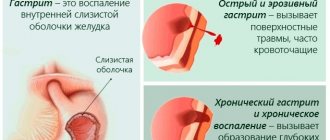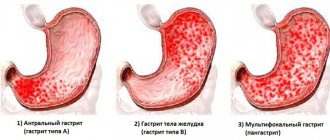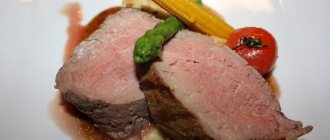The healing qualities of rice are generally well known. But few of us can remember and name them offhand. Meanwhile, the rice menu:
- Regenerates the level of nutrients, having an acceptable calorie content due to the presence of carbohydrates (which is important when there is a decrease in appetite).
- Contains components that relieve inflammation, irritation and have a beneficial effect on the functioning of human internal organs.
- Able to improve intestinal motility, which is responsible for the formation of normal feces.
- Reduces the carminative activity of the body, extinguishing the source of fermentation in it.
- Protects the walls of the stomach from the effects of its caustic juice.
- Rich in starch, which helps eliminate diarrhea.
- Removes the urge to vomit.
Also, rice decoction for diarrhea in adults:
- Does not cause allergic phenomena and associated complications.
- Stabilizes blood pressure.
Moreover, treatment with a decoction is suitable for both those who have loose stools and those who have decided to lose excess weight through a diet. That is, it is a multi-purpose remedy for regulating not only intestinal function. Suffice it to say that the presence of vitamin B ensures the strengthening of the peripheral nervous system and has a cosmetic effect, improving the well-being of the skin.
And yet, rice water is mainly used for diarrhea:
- As a prevention of foodborne infectious diseases.
- For intestinal disorders during acclimatization.
- To relieve the effects of nervous overload.
- As a result of poisoning (in non-acute cases).
The last point deserves special attention. Poor quality food sometimes provokes severe intoxication. The patient develops a fever, nausea, vomiting, stomach cramps, diarrhea, and blood pressure decreases. These are characteristic signs of dysfunction of the digestive tract.
Rice for diarrhea is indicated for all age categories, however, rice porridge with water should be distinguished from rice soup, although the recipe for both is very simple.
What kind of rice can I use?
The medicinal properties depend on the choice of cereal. In our case, the grains should:
- have a uniform color;
- comply with the expiration date;
- be firm, dry and not sticky;
- free from damage and impurities that cannot be removed.
The benefits of steamed rice, which has an oily substance and a dark tint, have not been scientifically proven, so it is better to refrain from it, as well as from a decoction of pre-processed cereals. Specifically suitable:
- Long grain non-sticky. Contains especially a lot of starch; like a gel, it coats the mucous membrane well, helping to eliminate the symptoms of gastritis, diarrhea, and stomach ulcers. Children suffering from dysbacteriosis, as well as a lack of phosphorus and potassium in the body, especially need it. Side dishes, pilafs, and salads are prepared from it.
- Brown (brown). Due to its high fiber content, this whole grain all-purpose rice helps with diarrhea just as well as constipation. In addition, it is easier to lose weight, since its use optimally regulates water balance. But for a child’s body (up to 14 years old) it is rough.
- Imperial black. Its grain shell contains a large number of valuable antioxidants and chemical elements, thanks to which, in case of poisoning, it effectively neutralizes toxins. Paella, risotto and soups are prepared from it.
- Round. It is a natural sorbent and has a powerful antiseptic effect. Indispensable for artificial cleansing of the body. Desserts, casseroles, porridges, pies and sushi are prepared from it.
How is it useful?
Rice is rich in fiber, so it is used as part of the diet. The product contains starch, which is slowly digested and gradually absorbed, helping to regulate glucose levels. The grains are rich in complex carbohydrates, protein, microelements: iodine, calcium phosphorus, B vitamins, vitamins E, PP.
- Rice cereal is rich in potassium, which neutralizes harmful salts from other foods.
- Low calorie content allows patients to maintain their weight within normal limits.
- Rice helps to quickly eliminate toxins and restore the well-being of patients who have experienced food poisoning.
Due to the presence of fiber, rice stimulates intestinal function. Cereals are especially indicated for disorders that are accompanied by diarrhea, since rice broth can retain water in the body.
Important! Rice is a hypoallergenic product, suitable for feeding children and people with food allergies.
https://youtu.be/nrILC2FFJ7g
Instructions for preparing rice water
Use of decoction for poisoning
The body tries to cope with toxins on its own, but it needs assistance and support. This involves washing the stomach, intestines, and sometimes a combination of both. In this situation, rice water fulfills the mission of a useful filler for the gastrointestinal tract.
It's easy to prepare. For one part of washed rice grains there are seven parts of water. The mixture is brought to a boil over medium heat, then simmered in a covered saucepan over low heat for 40-50 minutes. During this time, the rice has time to boil, but it is not needed: we are interested in the viscous liquid, which must be expressed. However, this does not mean that the resulting mess will have to be thrown away. This is an easily digestible food that will only enhance the fixing effect.
It is required to obtain at least 150 ml of decoction, which corresponds to the dose of 1 treatment session. Its reception should be evenly spread over the day at approximately 3-hour intervals. Whether this traditional, proven method will help in this particular case will become clear after completion. One way or another, insurance won't hurt.
Rice decoction for diarrhea is divided into 3 categories, which are intended:
- For adults.
- Preschoolers and teenage schoolchildren.
- Newborns and infants up to one year old.
The last point deserves special attention. Dehydration is dangerous primarily for children, because ultimately, the loss of a significant volume of fluid can be fatal. But rice does not allow it, removing liquid from the stool and returning it to a solid consistency. Therefore, only a doctor can tell you in detail how to prepare rice water for diarrhea for infants in order to achieve maximum recovery!
Rice decoction for other ailments with diarrhea
Acclimatization due to long distance travel or stress can also cause sudden diarrhea. In general, it can be caused by any weakening of immunity to external infections. To be on the safe side, you need to boil half a liter of water and, after mixing thoroughly, put 2 tablespoons of rice in a container. Then bring the contents to a boil again, then leave covered over low heat for 45-50 minutes. The resulting preparation is filtered so that for oral use it becomes more transparent and pleasant in appearance. Adults should consume the product every 2 hours, a quarter glass. The general condition and stool, as a rule, return to normal after several doses after 24 hours.
Rice decoction for newborns
Rice broth for diarrhea for breastfeeding children requires a special recipe, and not everyone knows exactly how the food is prepared. Parents will think about this after going to the hospital, and first, at an appointment with a doctor, the cause of the disease is clarified. If it is caused by an infectious infection, and the child has a fever, this technique will not help. For those who have a common disorder, it is necessary:
- Rinse a tablespoon of cereal, pour a glass of water over it and bring to a boil over moderate heat in a sealed container;
- turn the heat to minimum and, stirring occasionally, let it sit for 1 hour, possibly adding water as needed (to replenish the original volume).
After this, the dish is almost ready. All that remains is to pour the resulting jelly-like mass through a filter into a clean vessel and cool. By the way, if the product will be used for a long time, it is recommended to soak the rice for 12 hours before cooking.
You will have to take into account that for the dosage, “infants” will need a syringe without a needle. With “artificial” ones the situation is simpler: they make nutritious milk mixtures using rice water. You should note the moments of your appointment: this chart may be useful during your consultation with a pediatrician.
A baby less than a year old is given 50 ml to drink an arbitrary number of times.
Decoction for school-age children
Moreover, rice water will not harm a teenager against diarrhea. A recipe for a school-age child helps restore his health without much hassle. For one and a half tablespoons of rice there is half a liter of water. The broth is cooked over low heat for 45-50 minutes, until the grains soften. Take 50 ml at intervals of 3-4 hours, which, in addition to diarrhea, will help cope with minor dysbacteriosis. This is the name given to an imbalance in the intestinal microflora that appears during prolonged use of antibiotics. Due to the aging of the body, elderly citizens experience natural dysbacteriosis, so this recipe is also acceptable to them, including due to the low cost of the product.
To maintain immunity and optimize the digestive process, treatment with rice should be alternated with drinking cranberry juice.
Medicinal properties
A decoction based on rice cereal is useful because it includes a large number of components with enveloping properties. This helps protect the intestinal walls from the influence of stomach acid, as well as instantly relieve irritation. Moreover, during therapy, intestinal motility improves and stool frequency and consistency normalizes. The cereal contains the following components:
- starch provides a binding effect and creates a feeling of saturation and fullness in the stomach;
- vitamin E, which helps fight any gastrointestinal disorders;
- vitamins B1, B2, B3, B6, which improve intestinal motility;
- macroelements and microelements: calcium, potassium, copper, phosphorus, iron, manganese, iodine, zinc, selenium for nutrition and cleansing of the gastrointestinal tract;
- minerals that improve the absorption of a number of products in the gastrointestinal tract.
Rice contains 8 amino acids necessary to maintain human health at an optimal level, including the state of the gastrointestinal tract.
Did you know that one of the most useful crops is considered to be unpeeled (brown) rice, during the processing of which the shell is not removed, and it retains many useful substances that help normalize the functioning of the gastrointestinal tract.
Rice water for diarrhea is an excellent binding agent due to the high concentration of starch included in this porridge. All this leads to the binding of excess fluid, normal density of the masses passing through the gastrointestinal tract. Another irreplaceable property of cereals is increased nutritional value. Since with diarrhea the patient loses a huge amount of useful substances, its use is 100% justified and recommended by doctors. The main thing is to know how to take this medicine.
Here are the main properties of rice water, due to which it actively fights diarrhea:
- enveloping the walls of the stomach and intestines;
- protection from the negative effects of acidic substances;
- soothing the mucous membrane;
- relieving irritation;
- binding of gastrointestinal contents;
- eliminating and preventing the gag reflex;
- purgation;
- consolidation of fecal matter;
- stabilization of peristalsis;
- eliminating the processes of gas formation, rotting, bloating;
- comprehensive nutrition of the body;
- removal of waste and toxic substances.
Thus, rice is indispensable for diarrhea due to its availability and versatility. And its ease of preparation and the virtual absence of restrictions on use allows the drug to be used everywhere.
Features of the use of rice water
This drug is used for diarrhea of various types, including long-term ones. Even if it is a serious digestive disorder, the decoction can successfully cope with it. However, here the usual recipe will no longer help - we need another, more radical one. Fry 5 tablespoons of rice grains without oil in a frying pan until they acquire a straw color, pass through a blender or coffee grinder. The resulting flour is used as the raw material for the future super-decoction. It is poured with 3 glasses of water and, stirring, steamed for half an hour over low heat until it becomes a thick mass. As needed, boiled water is added to the porridge to thin it out.
An hour after taking this substance orally, you are allowed to eat a little bread, but only white, not black, so as not to upset the acid balance in the stomach. On the second day, it won’t hurt to add a piece of cow’s butter to the broth, dissolve chicken pate in it, or eat a few minced turkey meatballs as a snack. But it’s still too early to consume meat broth.
For children with long-term stool disorders, the same decoction with a creamy consistency is indicated. It quickly brings the microflora in order, minimizes dehydration and removes irritation in the intestines. The resulting porridge should be divided into small parts so that the baby eats everything within a day.
One way or another, do not forget: with constant consumption of rice dishes, constipation will sooner or later occur. Therefore, the most appropriate period of treatment is no more than 3 days, and if a stable condition occurs earlier, treatment can be stopped ahead of schedule.
How to choose a product
- White rice is the most common variety in our country. It can be either oblong or round. Consuming this variety for gastritis is very useful. But still, it is somewhat inferior in its properties to brown rice, which contains much more vitamins, selenium, zinc, as well as a huge amount of fiber. This cereal is recommended to be added to the menu not only for gastritis, but also for any other gastrointestinal diseases, and as a preventive measure for such diseases.
- Another grain worth mentioning is red wild rice. This variety is no less useful than the brown one, due to the fact that the shell of the grains was not processed or polished. Dishes made from such cereals are distinguished by their rich mineral composition and increased nutritional value.
- If you can’t find brown or red rice, you can choose white rice. The main thing is that the cereal is whole grain, because for gastritis, “cut” is not very useful.
Contraindications
If you know when to stop and adhere to culinary technology, rice products in the diet mostly do not cause complications. At the same time, although the decoction stabilizes the epithelium, it is not suitable for everyone for diarrhea. So, if vomiting occurs, it is useless. It will not help if you have a fever of more than 38°C, mucous or bloody stools with food fragments and severe pain in the abdominal cavity. Moreover, in cases where the body’s condition is critical, drinking it is unacceptable.
For example, it is strictly forbidden to take the decoction orally if a person has impaired consciousness and other obvious symptoms of severe food poisoning. In this case, it is preferable not to stop, but to continue self-cleansing the body of dangerous toxins through diarrhea, although rice binds them, but only partially. And always under the supervision of a doctor! And later, during rehabilitation, treatment with boiled rice is possible only after the approval of the medical staff. The fact is that this method is not always an alternative to drug treatment.
You should not resort to this remedy if you have colitis (remember that the decoction holds it together), an intestinal infection, or an individual intolerance to this folk remedy. If liquid, unformed feces do not stop in an adult patient after 2 days of treatment, further use of the decoction, unfortunately, does not make sense. If we are talking about a child suffering from persistent green stools, intensive measures must be taken immediately. Finally, if the baby is not yet 6 months old, the decoction should not be given to him at all (the gastrointestinal tract at this age is not yet ready for such manipulations).
Diet for gastritis
Many foods on our table contribute to such a fairly common disease as gastritis, in which the gastric mucosa becomes inflamed. Gastritis is distinguished between high and low acidity. Heartburn, nausea, vomiting, a feeling of heaviness and pain in the upper abdomen are the main signs of gastritis. There are several reasons for the occurrence and development of gastritis, but the main one is a long-term violation of the diet and quality of nutrition. And therefore, treatment of this disease always begins with a properly formulated special diet. A rational, effective diet will eliminate many problems and help the body cope with this disease.
Foods for diet for gastritis
First of all, you should avoid foods that cause irritation of the mucous membrane and increased gastric secretion (spicy and salty foods, rich broths, tea, coffee, carbonated drinks, citrus juices, alcohol, etc.). It is unacceptable to consume foods fried in animal fats and oil. It is necessary to remove food with coarse fibrous fiber (turnips, radishes, rutabaga, bran bread, muesli). You should exclude fatty meats, canned food, smoked foods, fresh bread (dried or yesterday's baked bread is suitable), fried or hard-boiled eggs, sharp salty cheeses, various sauces, and seasonings. The thermal conditions of the diet do not allow the consumption of very cold or very hot food. The permissible food temperature limits are from +15° to +60°.
What can you eat if you have gastritis?
According to the recommendations of nutritionists, food should be as gentle as possible and contain a sufficient amount of valuable substances. The best diet consists of:
- Liquid or pureed first courses;
- Steam cutlets;
- Liquid porridges;
- Vegetable puree;
- Boiled fish, seafood;
- Boiled lean meat;
- Kissels;
- Soft-boiled eggs;
- Fresh cottage cheese.
You need to eat more fresh vegetables and salads made from them, seasoned only with vegetable oil. The effectiveness of these foods and dishes is explained by the fact that they are easily digestible; their consumption does not cause increased secretion of gastric juice, which will not irritate the gastric mucosa. At the same time, the body is fully provided with a sufficient amount of energy. The diet is of great importance; it is recommended to eat often, in small portions, without overeating, and chewing food thoroughly. After all, Hippocrates said: “The longer you chew, the longer you live.” You are allowed to drink weak tea, non-carbonated mineral water, and non-acidic compote. Natural freshly squeezed juices, vegetable and fruit, in particular, carrot, potato, carrot and apple, are useful.
Sample diet menu for gastritis:
Puréed food
The first breakfast may consist of a steamed omelette of two eggs, pureed oatmeal and tea with milk. For second breakfast you can drink a glass of milk. Lunch: carrot and potato puree soup, steamed meat pudding with bechamel sauce, pureed buckwheat porridge, fruit jelly. Afternoon snack: boiled fish with pureed green peas. At night - a glass of milk.
Unprocessed food:
The first breakfast consists of crumbly buckwheat porridge, soft-boiled eggs and a glass of tea with milk. 2nd breakfast: non-acidic fresh cottage cheese, rosehip decoction. Lunch: vegetarian potato soup, boiled meat (beef, white chicken or rabbit), boiled carrots, bran compote boiled with sugar. Afternoon snack: decoction of wheat bran with sugar, plus crackers. Dinner: boiled fish baked in milk sauce, carrot-apple roll, glass of tea with milk. It is good to drink milk at night.
For the day: white bread – 300g, sugar – 40g, butter – 30g.
Several recipes for preparing dietary dishes
Carrot soup puree (for gastritis with low acidity):
Cut washed, peeled carrots (300g) into small pieces and cook in meat broth. Remove, rub the carrots through a sieve, and put back into the broth. Fry flour (1 tbsp) in butter, dilute with a small amount of broth, then add this mixture to the soup and bring to a boil. Remove from heat. Beat the egg with 100 ml of milk and, stirring constantly, pour into the soup in a thin stream.
Rice slimy soup (for gastritis with high acidity):
4 tbsp. Boil spoons of rice in three glasses of salted water until it is well boiled. Then rub this rice broth through a sieve, bring it to a boil, and remove from heat. Beat the egg with 300 ml of milk, add sugar if desired, stirring constantly, add the mixture to the rice water. Add 10g butter, stir, cool slightly.
There are a lot of diets now, but not all of them are suitable for treating gastritis. For example, a fast diet is ineffective in this case, since it consists of rapid weight loss, and its effectiveness is very unstable. A good result in the treatment of gastritis can be obtained by following these tips and, of course, medical consultation.
I would like to know how useful the article was for those who read it, whether there was an effect from using the proposed diet, what were the benefits of its use. Please leave your feedback on the results of using the recipes. Your experience will help many who want to get rid of gastritis.
www.wmj.ru
What to do if it doesn’t help
In any case, you need to learn a simple rule: we carry out the desoldering process according to the principle “often, but little by little”, otherwise vomiting cannot be avoided. If the decoction does not give positive results within 3 days, you will have to seek qualified medical care. However, one last thing to consider.
If the rice is salted, sugar is added to it, or the product is mixed with other food, then you will not get the desired effect. Children, of course, should not add anything either. And for the treatment to be successful, the child must take the drug in sufficient quantities, otherwise it may not work. This is not easy to do - the product is tasteless, “disgusting” and the little patient will certainly not like it. Parents have no other choice but to interest him. That's why they are parents...
Cholesterol is under control
". When I was diagnosed with high cholesterol, I began to strictly follow the doctor’s instructions and took expensive medications. But there was no stable result.
The condition improved dramatically after I began to regularly eat red rice (you can use brown and brown). I heard about its beneficial properties on TV and decided to try it, but the doctor did not mind.
There were no special recipes, just 3 times a week I ate red rice cooked in water, the usual lunch portion: I pre-soaked it for 10-12 hours, at first I salted it to a minimum, and then I began to acidify it with balsamic vinegar - then salt was not needed at all. About 2 months later I took tests and my cholesterol levels dropped noticeably.
Gamma-oryzanol is an extract of rice bran oil, known for its healing effect on stomach and cardiovascular diseases. The results of more than two dozen studies in the United States and Japan indicate the therapeutic effectiveness of this substance against gastritis, peptic ulcers and irritable bowel syndrome, as well as for reducing high blood cholesterol and easing symptoms of menopause.
LDL and reducing their potential ability to cause atherosclerosis and blockage of blood vessels. Fiber adsorbs fats. prevents their absorption, which also leads to normalization of cholesterol levels in the blood.
Contraindications for red rice: periods of exacerbation of gastrointestinal diseases; age up to 6 months. When growing rice, arsenic is often used (as a pesticide), so you need to purchase cereals that have only passed toxicological control in the Russian Federation.
Additionally for white rice: tendency to constipation and colitis. Abuse increases the risk of atherosclerosis, diabetes, hypertension and kidney stones. Rice contains enough carbohydrates. If you want to lose weight without physical activity, do not combine it with foods rich in protein (for example, meat). Due to the large amount of starch, it is not recommended to combine it with foods containing sugar, as this can cause fermentation in the intestines.
IMPORTANT
✅ Rice does not contain gluten, so it is indicated if you are prone to allergic reactions to this protein.
✅ Despite the high carbohydrate content, the glycemic index of red rice is low - 55 units, so it is recommended for diabetes.











